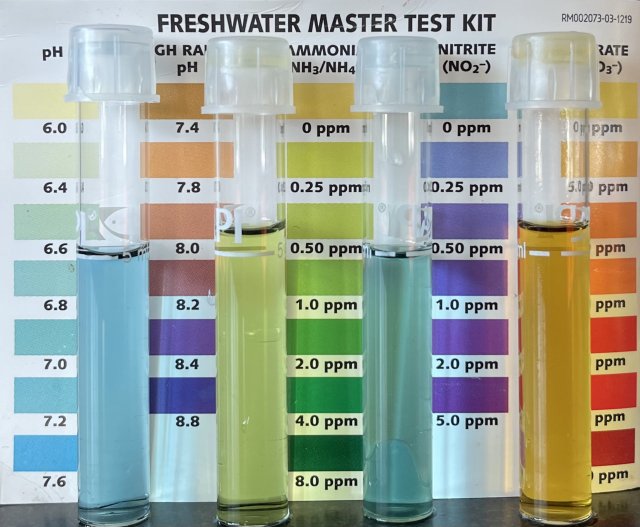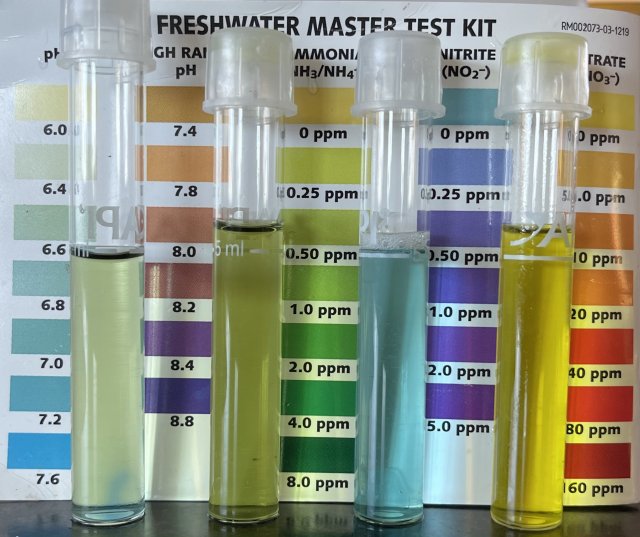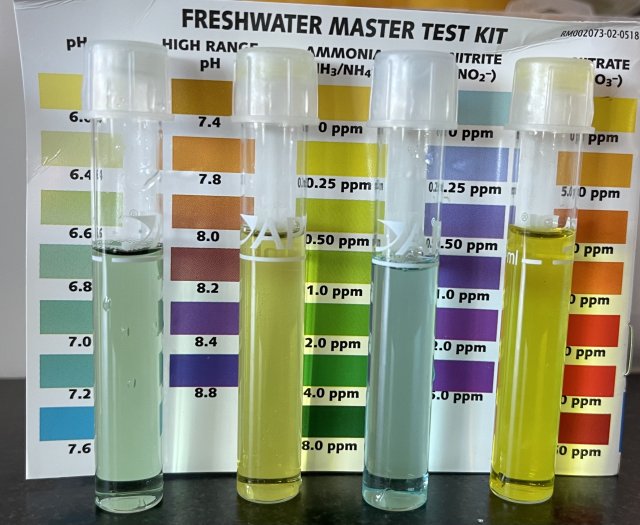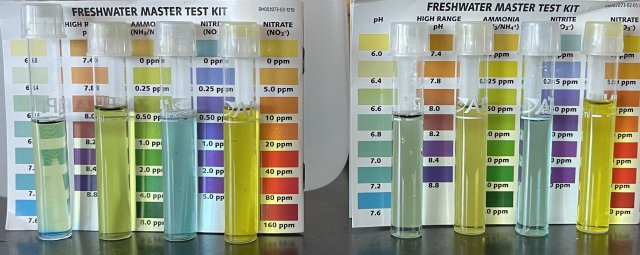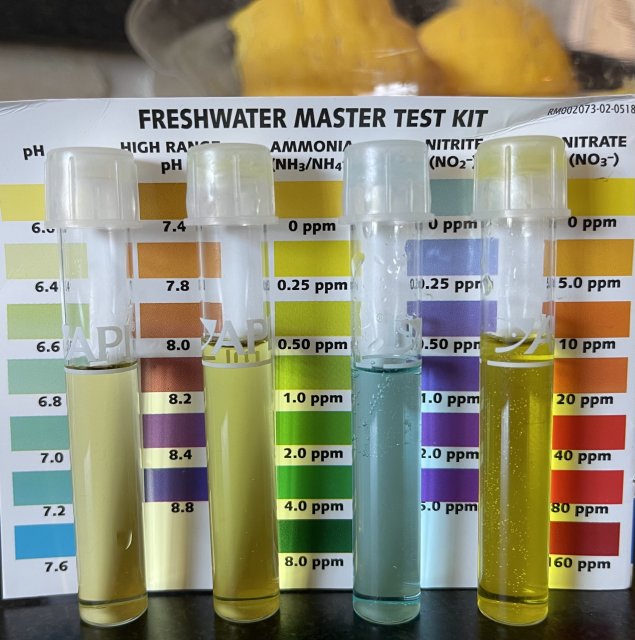So I busted out the master test kit today.
i checked the five 10-gals (they all share the same water), the 180gal, and the 65gal so far.
ALL of the tanks read 0.25-.5 ppm ammonia (it’s really hard for me to differentiate the colors)
all had the same pH,
180gal showed trace amounts of nitrites in the 180gal, 0 for 10gal-line and 65gal.
nitrates 10-20 ppm 10-gal line, 40-60ppm 65gal, 80ppm 180gal.
I was concerned about the unanimous ammonia readings, so I checked both tap water and filtered water, and got similar readings from the tanks for pH, ammonia.
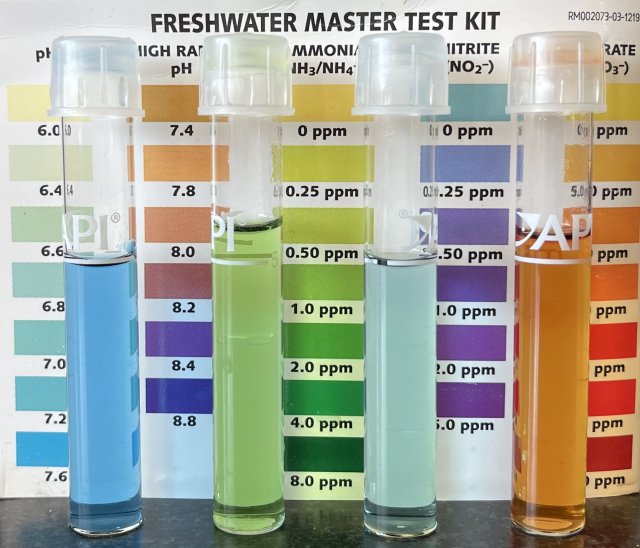
tap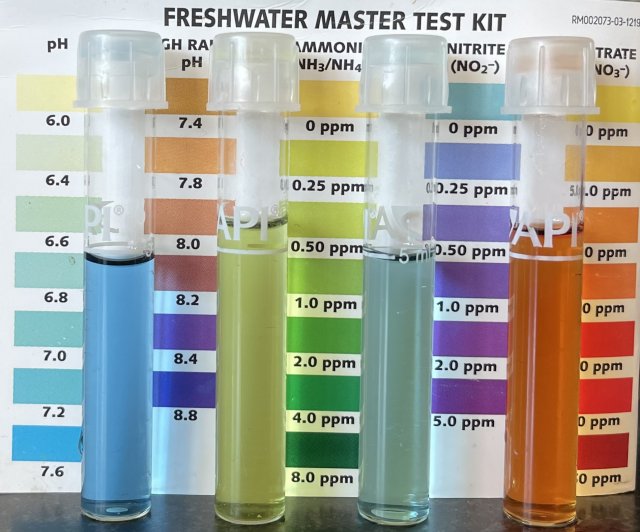
Filtered
Lot expires 2025, so it’s far from old.
Or is it normal for water to have ammonia? ?
should I throw it out and get a new one?
i checked the five 10-gals (they all share the same water), the 180gal, and the 65gal so far.
ALL of the tanks read 0.25-.5 ppm ammonia (it’s really hard for me to differentiate the colors)
all had the same pH,
180gal showed trace amounts of nitrites in the 180gal, 0 for 10gal-line and 65gal.
nitrates 10-20 ppm 10-gal line, 40-60ppm 65gal, 80ppm 180gal.
I was concerned about the unanimous ammonia readings, so I checked both tap water and filtered water, and got similar readings from the tanks for pH, ammonia.

tap

Filtered
Lot expires 2025, so it’s far from old.
Or is it normal for water to have ammonia? ?
should I throw it out and get a new one?



